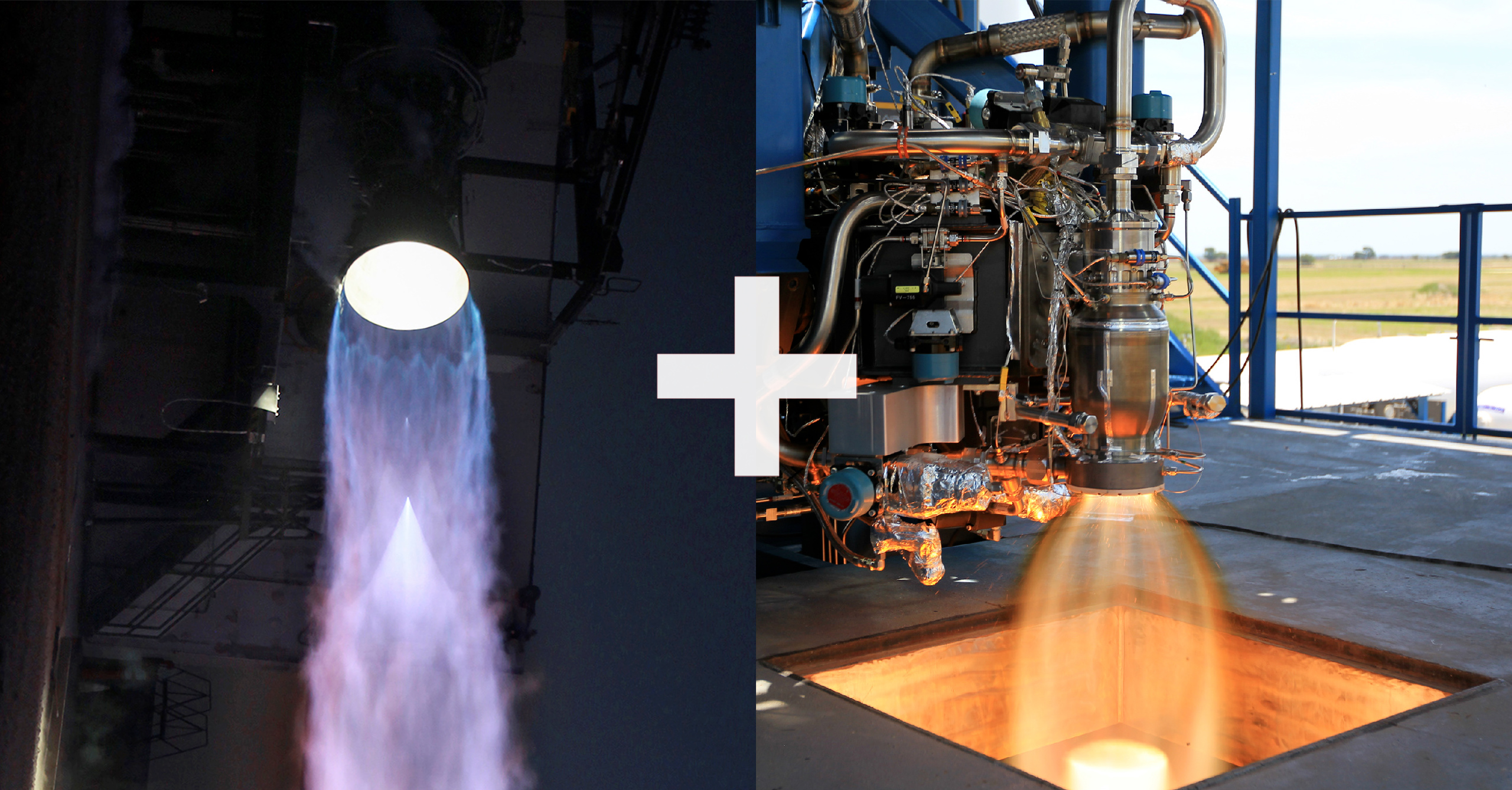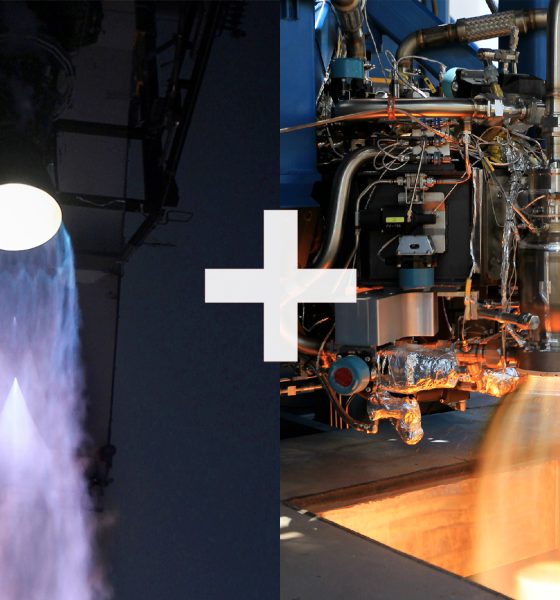

News
SpaceX Starship booster’s ‘hot gas’ thrusters make first public appearance
‘Hot gas’ thrusters meant to boost the efficiency of SpaceX’s Starship spacecraft and Super Heavy boosters have been spotted in public for the first time.
On the evening of June 21st, spaceflight photographer Brady Kenniston – on assignment for NASASpaceflight – caught the first glimpses ever of what amounts to the newest rocket engine designed and built by SpaceX. As yet unnamed, SpaceX CEO Elon Musk has consistently referred to the new engine as a “hot gas thruster” for several years, though virtually no concrete details have ever been shared.
The reason behind the lack of major visible progress is simple enough: until Starship is ready for serious orbital testing, hot-gas thrusters just aren’t necessary. Instead, SpaceX has relied on tried and true cold gas thrusters derived – or quite literally taken, in the case of Starhopper – from those used on Falcon 9 and Falcon Heavy boosters to maintain attitude control in space and safely land back on Earth.
For Starhopper and Starships SN5 and SN6, all three of which focused on simple hop tests, those cold-gas thrusters primarily augmented Raptor’s thrust vectoring capabilities by fine-tuning vehicle rotation and attitude. On Starships SN8, SN9, SN10, SN11, and SN15, cold-gas thrusters played a more substantial role in their more complex medium-altitude test flights, flipping each ship horizontal at apogee, helping to maintain stability during skydiver-style freefalls back to Earth, and augmenting three Raptor engines during the final landing flip and landing burn.
By all appearances, the thrusters did their jobs perfectly on all nine test flights. However, those eight suborbital prototypes could all afford to expend large portions of their mass budgets on a plethora of pressure vessels filled with tons of nitrogen gas. More importantly, empty Starships and their Super Heavy boosters are expected to weigh anywhere from 10-50 times more than Falcon 9’s booster and upper stage, and SpaceX’s suborbital prototypes have also required much less performance (delta V) than operational ships and boosters will need.
Cold gas (nitrogen) thrusters are too inefficient and the exponential aspects of rocket engineering too cruel for what works on Falcon to efficiently meet the needs of Starship and Super Heavy. SpaceX’s long-planned solution has been the development of a bipropellant thruster that would borrow from Raptor expertise and use the same methane and oxygen propellant – albeit in their high-pressure gaseous forms. If properly realized, such a thruster could offer around five times the efficiency and thrust of a similarly-sized cold-gas system – a boon for maneuvering and manipulating massive 100-250 ton (~250,000-550,000 lb) ships and boosters in space.
In theory, moving from nitrogen to methalox thrusters also means that Starship could refuel its thrusters using a tiny fraction of the vast supply of liquid methane and oxygen propellant it will already be carrying to the Moon or Mars. Ultimately, though, Musk says that those hot gas attitude control thrusters will debut on the Super Heavy booster assigned to Starship’s first orbital test flight. While SpaceX’s initial July target now appears to be out of the question, all flight and pad hardware could still be ready to launch as early as August or September.
Update: One month after Elon Musk stated that SpaceX was “aiming” to have hot gas thrusters on the first flightworthy Super Heavy booster, the CEO says those thrusters would be “an unnecessary complication for now” and “are being removed to speed up time to” Starship’s first orbital launch.

Elon Musk
Elon Musk’s X will start using a Tesla-like software update strategy
The initiative seems designed to accelerate updates to the social media platform, while maintaining maximum transparency.

Elon Musk’s social media platform X will adopt a Tesla-esque approach to software updates for its algorithm.
The initiative seems designed to accelerate updates to the social media platform, while maintaining maximum transparency.
X’s updates to its updates
As per Musk in a post on X, the social media company will be making a new algorithm to determine what organic and advertising posts are recommended to users. These updates would then be repeated every four weeks.
“We will make the new 𝕏 algorithm, including all code used to determine what organic and advertising posts are recommended to users, open source in 7 days. This will be repeated every 4 weeks, with comprehensive developer notes, to help you understand what changed,” Musk wrote in his post.
The initiative somewhat mirrors Tesla’s over-the-air update model, where vehicle software is regularly refined and pushed to users with detailed release notes. This should allow users to better understand the details of X’s every update and foster a healthy feedback loop for the social media platform.
xAI and X
X, formerly Twitter, has been acquired by Elon Musk’s artificial intelligence startup, xAI last year. Since then, xAI has seen a rapid rise in valuation. Following the company’s the company’s upsized $20 billion Series E funding round, estimates now suggest that xAI is worth tens about $230 to $235 billion. That’s several times larger than Tesla when Elon Musk received his controversial 2018 CEO Performance Award.
As per xAI, the Series E funding round attracted a diverse group of investors, including Valor Equity Partners, Stepstone Group, Fidelity Management & Research Company, Qatar Investment Authority, MGX, and Baron Capital Group, among others. Strategic partners NVIDIA and Cisco Investments also continued support for building the world’s largest GPU clusters.
News
Tesla FSD Supervised wins MotorTrend’s Best Driver Assistance Award
The decision marks a notable reversal for the publication from prior years, with judges citing major real-world improvements that pushed Tesla’s latest FSD software ahead of every competing ADAS system.

Tesla’s Full Self-Driving (Supervised) system has been named the best driver-assistance technology on the market, earning top honors at the 2026 MotorTrend Best Tech Awards.
The decision marks a notable reversal for the publication from prior years, with judges citing major real-world improvements that pushed Tesla’s latest FSD software ahead of every competing ADAS system. And it wasn’t even close.
MotorTrend reverses course
MotorTrend awarded Tesla FSD (Supervised) its 2026 Best Tech Driver Assistance title after extensive testing of the latest v14 software. The publication acknowledged that it had previously criticized earlier versions of FSD for erratic behavior and near-miss incidents, ultimately favoring rivals such as GM’s Super Cruise in earlier evaluations.
According to MotorTrend, the newest iteration of FSD resolved many of those shortcomings. Testers said v14 showed far smoother behavior in complex urban scenarios, including unprotected left turns, traffic circles, emergency vehicles, and dense city streets. While the system still requires constant driver supervision, judges concluded that no other advanced driver-assistance system currently matches its breadth of capability.
Unlike rival systems that rely on combinations of cameras, radar, lidar, and mapped highways, Tesla’s FSD operates using a camera-only approach and is capable of driving on city streets, rural roads, and freeways. MotorTrend stated that pure utility, the ability to handle nearly all road types, ultimately separated FSD from competitors like Ford BlueCruise, GM Super Cruise, and BMW’s Highway Assistant.
High cost and high capability
MotorTrend also addressed FSD’s pricing, which remains significantly higher than rival systems. Tesla currently charges $8,000 for a one-time purchase or $99 per month for a subscription, compared with far lower upfront and subscription costs from other automakers. The publication noted that the premium is justified given FSD’s unmatched scope and continuous software evolution.
Safety remained a central focus of the evaluation. While testers reported collision-free operation over thousands of miles, they noted ongoing concerns around FSD’s configurable driving modes, including options that allow aggressive driving and speeds beyond posted limits. MotorTrend emphasized that, like all Level 2 systems, FSD still depends on a fully attentive human driver at all times.
Despite those caveats, the publication concluded that Tesla’s rapid software progress fundamentally reshaped the competitive landscape. For drivers seeking the most capable hands-on driver-assistance system available today, MotorTrend concluded Tesla FSD (Supervised) now stands alone at the top.
News
Elon Musk’s Grokipedia surges to 5.6M articles, almost 79% of English Wikipedia
The explosive growth marks a major milestone for the AI-powered online encyclopedia, which was launched by Elon Musk’s xAI just months ago.

Elon Musk’s Grokipedia has grown to an impressive 5,615,201 articles as of today, closing in on 79% of the English Wikipedia’s current total of 7,119,376 articles.
The explosive growth marks a major milestone for the AI-powered online encyclopedia, which was launched by Elon Musk’s xAI just months ago. Needless to say, it would only be a matter of time before Grokipedia exceeds English Wikipedia in sheer volume.
Grokipedia’s rapid growth
xAI’s vision for Grokipedia emphasizes neutrality, while Grok’s reasoning capabilities allow for fast drafting and fact-checking. When Elon Musk announced the initiative in late September 2025, he noted that Grokipedia would be an improvement to Wikipedia because it would be designed to avoid bias.
At the time, Musk noted that Grokipedia “is a necessary step towards the xAI goal of understanding the Universe.”
Grokipedia was launched in late October, and while xAI was careful to list it only as Version 0.1 at the time, the online encyclopedia immediately earned praise. Wikipedia co-founder Larry Sanger highlighted the project’s innovative approach, noting how it leverages AI to fill knowledge gaps and enable rapid updates. Netizens also observed how Grokipedia tends to present articles in a more objective manner compared to Wikipedia, which is edited by humans.
Elon Musk’s ambitious plans
With 5,615,201 total articles, Grokipedia has now grown to almost 79% of English Wikipedia’s article base. This is incredibly quick, though Grokipedia remains text-only for now. xAI, for its part, has now updated the online encyclopedia’s iteration to v0.2.
Elon Musk has shared bold ideas for Grokipedia, including sending a record of the entire knowledge base to space as part of xAI’s mission to preserve and expand human understanding. At some point, Musk stated that Grokipedia will be renamed to Encyclopedia Galactica, and it will be sent to the cosmos.
“When Grokipedia is good enough (long way to go), we will change the name to Encyclopedia Galactica. It will be an open source distillation of all knowledge, including audio, images and video. Join xAI to help build the sci-fi version of the Library of Alexandria!” Musk wrote, adding in a later post that “Copies will be etched in stone and sent to the Moon, Mars and beyond. This time, it will not be lost.”








